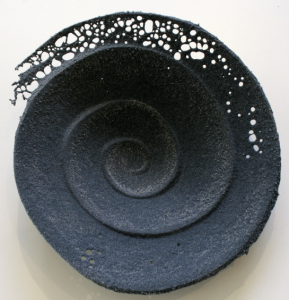European Museum for Modern Glass, Rosenau, Germany
Pâte de Verre – From Jugendstil to Studio Glass
May 10 to October 28, 2012
Pâte de verre is a special and extremely fragile type of glass. This mixture of glass powder, binder and metal oxides has been known since ancient times, but it enjoyed an unforeseen heyday in the Jugendstil or art nouveau period before being rediscovered, once again, by the studio glass movement in the UK and France in the 1980s. One fascinating aspect is that the art works – mostly bowls, vases and objects, although some sculptures and installations are also on display – are not immediately recognisable as glass; at first glance, what they are actually made of is a mystery.
This special exhibition shows the development of pâte de verre during the twentieth century. The exhibition covers sumptuous sculptures from the French art nouveau movement, with masterpieces by Henry Cros, Georges Despret and Victor Amalric Walter, to art deco objects by François-Emile Décorchemont, right through to the latest objects produced by the studio glass movement in Germany, France, the UK, Belgium, Austria, Switzerland, Estonia, Egypt and Japan. Fifty works by more than 30 artists are on display.
Visitors can familiarise themselves with the pâte de verre technique thanks to a series of original models and moulds by Hartmann Greb.
Artists represented:
Naoke Abe, Margaret Alston, Gabriel-Argy Rousseau, Henri Bergé, Keith Brocklehurst, Tessa Clegg, Henry Cros, Salvator Dali; Albert Dammouse; François-Emile Décorchemont, Georges Despret, Zakaria El-Konani, Alfred Finot, Ariane Forkel, Hartmann Greb, Kimiake Higuchi, Diana Hobson, Jacqueline Hoffmann-Botquelen, Anja Isphording, Kinuko Ito, Etienne Leperlier, Marianne Maderna,
Raymond Martinez, Jaroslav Matouš, Carine Neutjens, Richard Price, Gerhard Ribka, Heike Robertson, Mare Saare, Theodor G. Sellner, Victor Amalric Walter, Emma Wood

